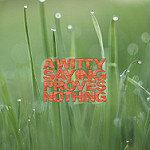1. Agents get rejected, too. We understand the pain. We often offer on projects that we are deeply passionate about, feel we’ve made a strong connection with the author, and end up being passed over for another agent. It is heartbreaking for us. There is day drinking! Like exes who just can’t let go, we follow these authors’ careers, hoping one day they might come back to us. We grieve. But we dust ourselves off and try again. This is one of the most difficult but necessary parts of working in this industry: the ability to keep moving forward in the face of often relentless rejection.
2. Day-to-day and week-to-week, not linear. I typically set goals for what I want to get done in a day or week, like catching up on my queries or reading a few submissions. Those goals are often derailed. Maybe an author just received an offer of representation from another agent. Now that author’s manuscript has to be read within a week or two so I can determine if I, too, want to offer rep; I have to prepare to chat with them to see if we are a good fit, and then, if we are, I have to sell myself to them. Now my week has gone to a potential new client and their manuscript. Or maybe a client who is out on submission might get an offer from an editor. Now, I’m spending my time reaching out to all the others editors who are considering the manuscript to let them know there’s an offer on the table. If I can’t reach them by phone, I email them. I then have to prepare a deal memo so I have a solid idea of how the negotiation is going to proceed based on the publisher’s offer and what would be ideal for my client.
3. Our Clients Come First. This is good. It is our intention to build and maintain our client lists that primarily makes an agent great—without clients we have nothing to sell, and we make no money! So when our clients send in their manuscripts for edits or when they have a crisis, they become our focus. This means reading and full manuscripts that we’ve requested gets put on the back burner.
4. If We Live In NYC, then part of our time is spent networking. We have coffee, lunch, and drink dates with editors so we can learn what they are looking for and how their imprints work, and so we can make new contacts. We go to mixers or maybe even stop by a publisher’s office to meet all the editors at a specific imprint.
5. Agenting isn’t a 9-to-5 Job. I try to have as much work/life balance as I can, but sometimes a 40-hour week isn’t enough. This can mean working seven days a week and pulling in 60-, 70-, or even 80-hour weeks. All unpaid. It is often necessary, but it’s exhausting. It does mean that as much as we want to tackle our overflowing inbox, we often need random mental health days or time to just read for fun, or take a walk, or lie in the park, or see a movie. The point is, we aren’t ignoring queries or submissions.
6. Publishing is a Small World. You never know where the agent you go on a rant about or who you unfollow on Twitter because they rejected you will end up in their career. They might move to the agency that you ultimately sign with. They could become an editor whom your future agent might query. Your agent could part ways with you or leave the industry, and now you need a new agent. Don’t burn bridges. Rejection is hard. No one likes it. But you should still remain a professional when faced with it. Keep rants to yourself or your friends. Don’t take it to your blog or social media.
7. The Most Important Fact: We do this job because we love it and are passionate about books!
Creative Commons Credit: Skyler King









